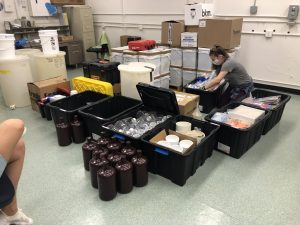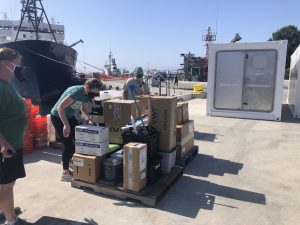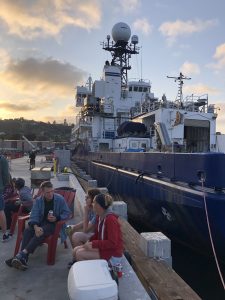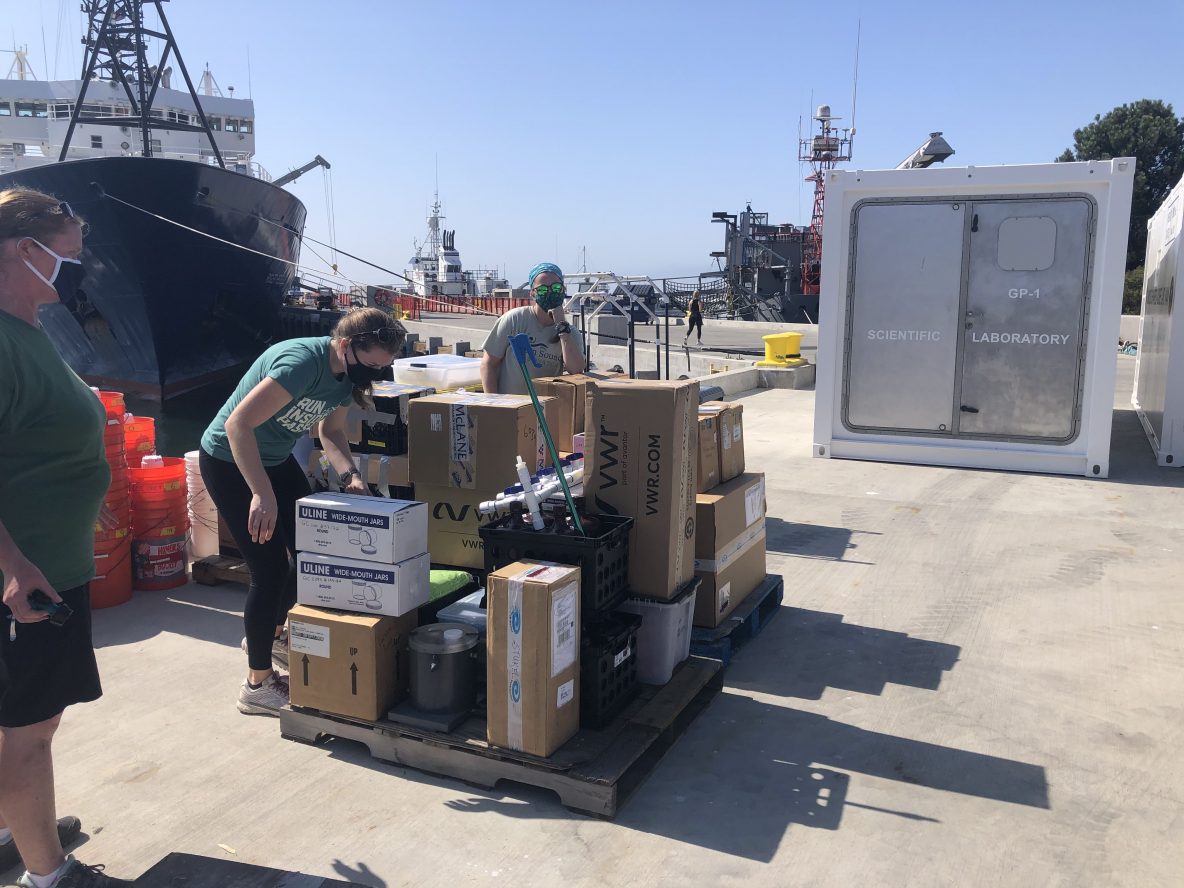Do you ever leave the house for a long trip with the lingering anxiety that you forgot something crucial? Well take that and multiply it x10 and you’ve got a slight glimpse into how a scientist feels as they set foot on a boat for a month-long research cruise.
The preparation, packing and anticipation that goes into planning for an oceanographic expedition begins months before the cruise date, especially in COVID-influenced times where once you set foot on the boat there’s no going back. Like weather forecasts, we can only predict what the ocean will be like on the set cruise dates based on historical climatologies and with climate change causing more extreme conditions, the challenge becomes even greater. Therefore, we often pack everything we could imagine needing, which ends up being close to the entire lab’s worth of supplies.

For the Decima Lab, we actually brought more things than we had in our lab, since our lab space didn’t exist yet! Common and abundant items included petri dishes, filters, acid-cleaned bottles, nets, jars for preservation and chemicals. Less obvious items like ratchet straps, zip ties, hoses, sponges, acrylic and . Needless to say our Home Depot receipt made the employees quite happy. Everything must be thoroughly and clearly labeled and cataloged so that when we are sleep-deprived and scattered we will have even a sliver of organization to maintain our sanity.
After everything is packed into heavy-duty, waterproof boxes it must be meticulously loaded into trucks to transport from Scripps to Nimitz Marine Facility where the RV Revelle resides in port. This step, alongside palleting and craning all supplies onto the ship are not trivial and take teamwork, people-power and a love for Tetris to accomplish.

Once aboard the ship, cruise participants cannot leave the ship’s “bubble” due to COVID protocols and we focus all our attention towards building lab spaces and securing everything for the possibility of rough seas. These steps require craftiness and engineering skills as we utilize power tools, straps and excessive amounts of scrap wood (referred to as “dunnage”) to rig up shelves, tables, and any setup we will need.
Finally, at the end of a hard day’s work in port, the science team and crew all gather on the pier for drinks, games, socializing and even an ocean dip to unwind. The chatter in the air is laden with excitement and anticipation. Memories of past cruises are exchanged between scientists like veterans recounting war stories. Innovative research ideas are proposed, holding hope that the conditions will be agreeable.


